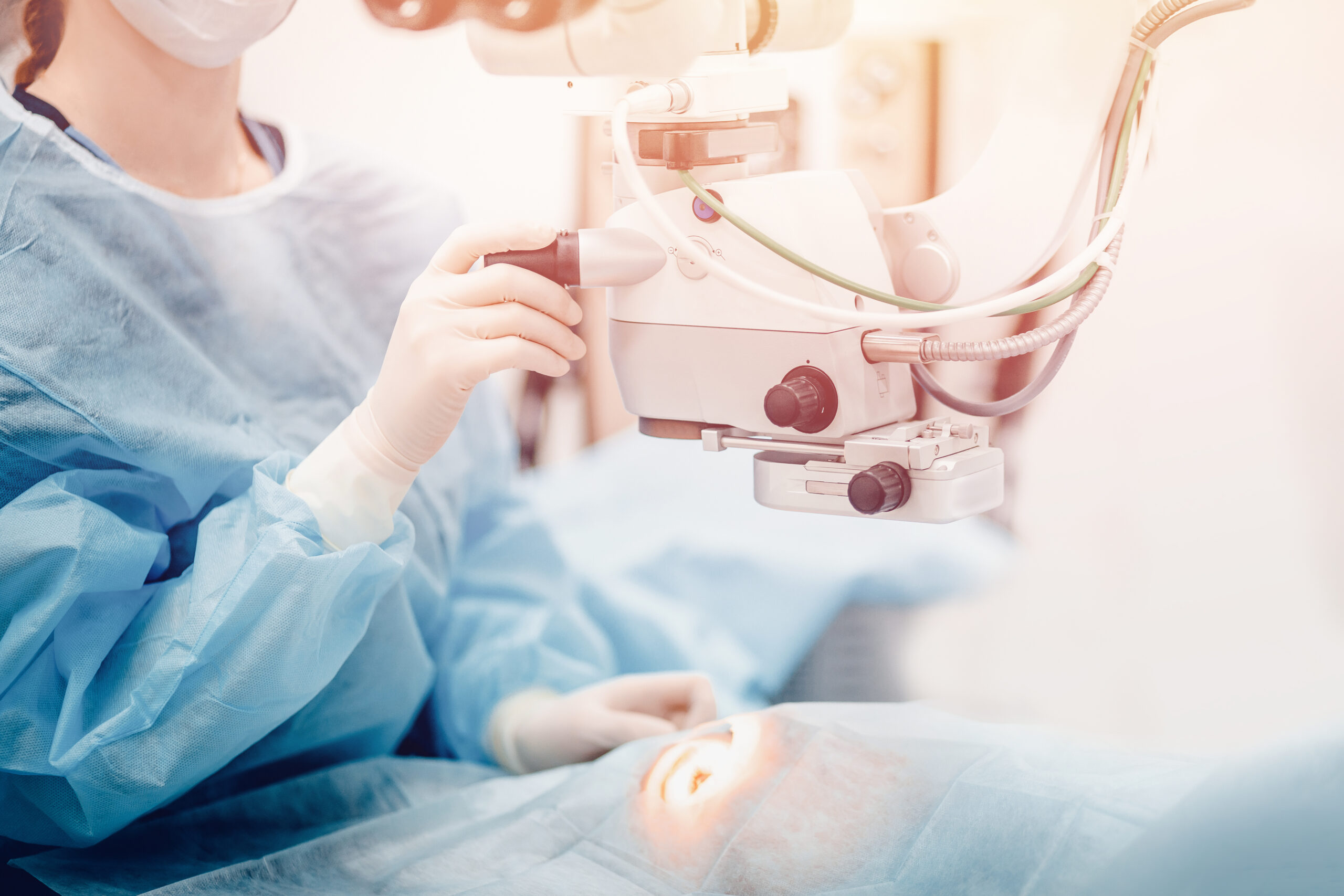Laser-assisted in situ keratomileusis (LASIK) is the most commonly performed refractive surgery for correcting vision issues with 95% of patients reporting high satisfaction after treatment. However, like all surgeries, LASIK comes with risks, and among the most prevalent complications is dry eye disease (DED).
Dry eye disease is a condition characterized by inadequate tear production or poor tear quality in which tears have the wrong consistency and evaporate too quickly. Symptoms of DED range from mild eye irritation to severe discomfort and fluctuating vision, often interfering with daily activities. Approximately 95% of LASIK patients experience DED symptoms immediately after surgery, and 60% of patients continue to experience symptoms one month later.
The association between LASIK and DED is linked to corneal nerve disruption. The cornea is the outermost layer of the eye, responsible for focusing incoming light onto the retina. Refractive errors, like nearsightedness or farsightedness, occur due to irregularities in the shape of the eye or cornea, leading to blurred vision. LASIK reshapes the cornea permanently by first placing a suction ring on the eye to establish a vacuum seal, stabilizing it during the procedure. Then, a microkeratome blade device or femtosecond laser is used to create a flap in the cornea’s outer layer. The flap will be folded back to expose the stroma, where laser pulses reshape the cornea by vaporizing a portion of the stroma before repositioning the flap back into place.
Structure of the Human Eye
Image Source: RUSSELLTATEdotCOM
Previous research identified a loss of goblet cells in the conjunctiva after LASIK, caused by high pressure induced by the suction ring used during the procedure. Conjunctival goblet cells (CGCs) are specialized cells that secrete mucus essential for the tear film’s lubricating and protective properties. Damage to these cells post-LASIK can lead to dry eye syndrome and ocular surface inflammation.
A well-known topical treatment for dry eye is Restasis (cyclosporine A), which increases natural tear production and goblet cell density by suppressing ocular inflammation associated with DED. However, it has temporary side effects such as irritation, pain, and sensation of having a foreign body in the eye. More recently, an alternative medication called Miebo, a perfluorohexyloctane ophthalmic solution, has been FDA-approved for DED treatment. This drop consists of a water-free, single-ingredient, and preservative-free prescription solution that directly targets tear evaporation. Upon application, it was found to spread uniformly across the eye, forming a protective coat over the tear film and effectively preventing tear evaporation.
Ultimately, dry eye disease remains a challenge for many patients following LASIK surgery. The introduction of new medications such as Miebo has been greatly needed and brings hope to individuals struggling with this persistent condition.
Featured Image Source: Parilov










